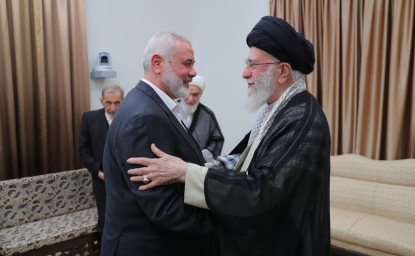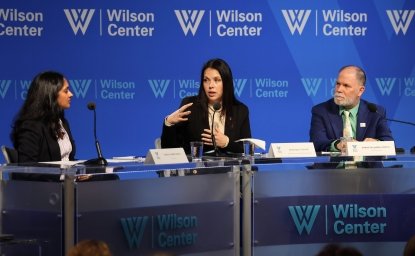Iran and Saudi Arabia have been regional rivals for more than three decades. Tensions date back to the 1979 Iranian revolution. The Saudi monarchy, which based its legitimacy on Islam, felt its dominance in the Muslim world threatened by the establishment of the Islamic Republic. Relations were strained throughout the 1980s, as Saudi Arabia quietly supported Iraq during the Iran-Iraq war. Tensions eased slightly under President Akbar Hashemi Rafsanjani (1989-1997) and Mohammad Khatami (1997-2005), who sought to improve Iran’s relations with its neighbors.
But movement towards rapprochement stalled in 2005, when President Mahmoud Ahmadinejad came to power. The Arab Spring in 2011 further aggravated tensions, especially in Bahrain, where Shiites protested against the Sunni royal family. Saudi Arabia sent troops to quell the uprising and blamed Iran for provoking the unrest.
Tehran has been trying to improve relations with Riyadh since President Rouhani’s election in 2013. But the two countries have clashed over regional conflicts, particularly in Syria and Yemen. In September 2015, hundreds of Iranians were killed in a stampede during the annual hajj ritual in Saudi Arabia. Tehran accused Riyadh of mismanagement, and Saudi officials accused Iran of playing politics in the aftermath of the tragedy. After Saudi Arabia executed Shiite cleric Nimr al Nimr in January 2016, protesters attacked the Saudi embassy in Tehran. As a result, Saudi Arabia severed diplomatic ties with Iran.
The following is a timeline of Iran-Saudi relations since the 1979 revolution.
1980-1988: Iraq invades Iran, prompting an eight-year war.Saudi Arabia remains publicly neutral, but reportedly makes three of its ports available to ship military equipment to Iraq.
1981: Iranians clash with Saudi police after chanting political slogans in Mecca and Medina. Iranian officials accuse Saudi authorities of discriminating against Iranian pilgrims.
May 1981: Six Gulf states – Saudi Arabia, the United Arab Emirates, Qatar, Kuwait, Oman, and Bahrain – form the Gulf Cooperation Council, in part as a security response to the Iranian revolution and the Iran-Iraq war.
1982: Saudi Arabia reportedly supplies Iraq with $1 billion per month in aid.*
May 1984: Iran attacks a Saudi oil tanker in Saudi waters, in retaliation for Iraq’s attempts to interfere with Iran’s oil shipping. Saudi Arabia shoots down an Iranian Phantom jet over Saudi waters.
1987: Shiite pilgrims clash with Saudi police during the annual hajj, resulting in a stampede. At least 400 people are killed in the clashes, including more than 200 Iranians. In response, Iranian protesters attack the Saudi and Kuwaiti embassies in Tehran.
1988: Saudi Arabia severs ties with Iran over the hajj clash.
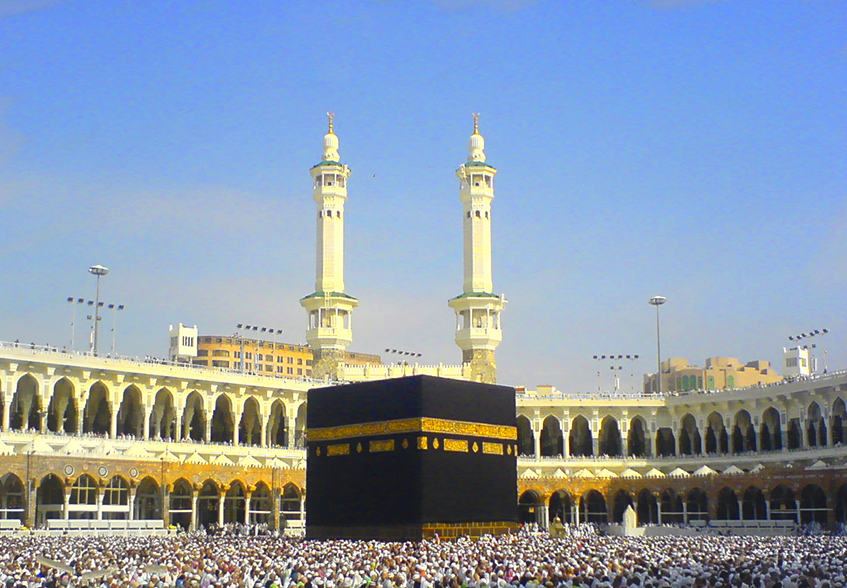
1988-1990: Iran boycotts the hajj after Saudi Arabia reduces the number of Iranian pilgrim visas in response the clashes in 1987.
1990: Saudi Arabia sends aid to Iran after an earthquake kills 40,000 people.
1991: Riyadh and Tehran restore diplomatic ties.
1989-1997: Akbar Hashemi Rafsanjani (left) is elected president and takes a more conciliatory stance towards Saudi Arabia and other Gulf countries. Trade and direct flights between the two countries increase.
1997-2005: President Mohammad Khatami comes to office and introduces a period of outreach to the Gulf. But Saudi officials grow wary of Iran’s growing influence in Iraq after the U.S.-led invasion toppled Saddam Hussein in 2003.
1997: Crown Prince Abdullah attends the Organization of Islamic Conference summit in Tehran, becoming the most senior Saudi official to visit Iran since 1979.
1999: Iranian President Khatami meets with Crown Prince Abdullah in Saudi Arabia. He is the first leader to visit Saudi Arabia since 1979.
2001: Iran and Saudi Arabia sign a security pact on terrorism and drug trafficking.
2005-2013: President Mahmoud Ahmadinejad (right) comes to power and takes a more hardline stance on foreign policy. Tehran and Riyadh increasingly seek to boost their regional influence through proxybattles in Lebanon, Palestine, Iraq, and Afghanistan.
2011: The Arab Spring fuels bilateral tensions. Saudi officials accuse Iran of inciting protests in Bahrain against the country’s Sunni royal family. The kingdom sends 1,000 troops to quell the uprising.
2011: The U.S. Justice Department charges two Iranians with attempting to murder Saudi Ambassador to the United States Adel al Jubeir.
2012: A series of protests against anti-Shiite discrimination erupt in Saudi Arabia’s Eastern Province. Saudi Arabia blames Iran for the protests.
2014: Saudi authorities issue a death sentence for Nimr al Nimr, a Shiite cleric involved in the 2011 protests. Iranian officials denounce the conviction.
March 2015: Saudi Arabia begins a bombing campaign in Yemen. Riyadh claims the airstrikes are a response to Iranian support for the Houthis, a Zaydi Shiite movement that took over large parts of the country in 2014. But the exact degree of Iranian support for the Houthis is debated.
.@AdelAlJubeir: “everyone knows that the #Iranians are present in #Yemen, provide support for the #Houthis, supply them with weapons…”
— Saudi Embassy (@SaudiEmbassyUSA) October 14, 2015
Why do you bomb oppressed people of Yemen, destroy infrastructure of a weak country & kill women & children? #Yemenattack
— Hassan Rouhani (@HassanRouhani) April 15, 2015
July 2015: Iran and the world’s six major powers reach a deal over Iran’s controversial nuclear program. Saudi officials publicly endorse the deal, despite past reservations.
September 2015: A stampede in Mina during the annual hajj kills at least 2,000 people, including hundreds of Iranians. Tehran accuses the Saudi government of mismanagement and threatens legal action.
November 2015: Iran and Saudi Arabia both attend Syrian peace talks in Vienna, along with more than a dozen other nations. Iranian Foreign Minister Mohammad Javad Zarif and his Saudi counterpart, Adel al Jubeir, reportedly get in a heated argument during the talks.
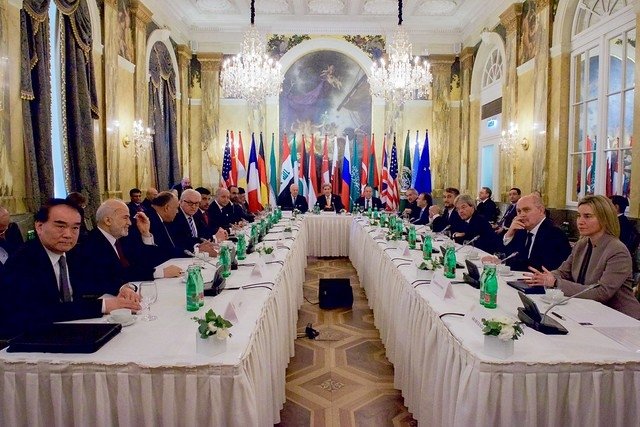
January 2016: Saudi Arabia executes Sheikh Nimr al Nimr, a prominent Shiite leader who supported anti-government demonstrations, along with 46 others for alleged terror-related offenses. The move prompts protests or condemnation from Shiites in Iran, Iraq, Bahrain, Turkey, Pakistan, India, Lebanon, and Yemen. In Iran, protestors burn part of the Saudi Embassy in Tehran and storm the compound. Saudi Arabia, Sudan and Bahrain sever diplomatic ties with Iran, and the UAE downgrades its relations with the Islamic Republic. All members of the Arab League - except for Lebanon - issue a statement condemning the attacks on the Saudi embassy.
Doubtlessly, unfairly-spilled blood of oppressed martyr #SheikhNimr will affect rapidly & Divine revenge will seize Saudi politicians.
— Khamenei.ir (@khamenei_ir) January 3, 2016
* Bulloch, John; Morris, Harvey (1989). The Gulf War: Its Origins, History and Consequences (1st published ed.). London: Methuen.

The Islamists
Learn more about Hamas and how it relates to similarly aligned organizations throughout the region. Read more

Explore More
Browse Insights & Analysis
Israel Escalates Attacks in Gaza: What’s Next?
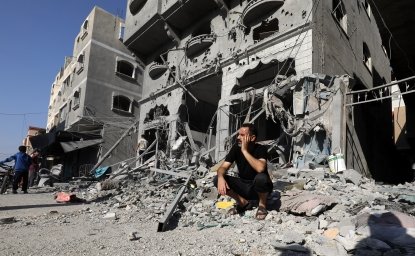
Israel Expands Operations on Multiple Fronts: Perspectives on the Conflict
